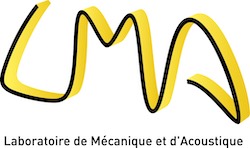Cross-property connections for heterogeneous materials belong to the realm of fundamental problems of engineering science and physics. They relate changes in different physical properties caused by various inhomogeneities (cracks, pores, inclusions), or, more generally – by the presence of certain microstructure. Their practical usefulness lies in the fact that one physical property (say, electrical conductivity) may be easier to measure than the other( say anisotropic elastic constants). This allows one to bypass difficulties of expressing the elastic properties in terms of relevant microstructural information (that, in addition, may not be available). Such connections are also helpful in the design of microstructures for the combined conductive/mechanical performance. Whereas connections between properties governed by mathematically similar laws are straightforward (say, electric and thermal conductivities), the ones between the elastic properties and conductivities constitute a much more complex problem. Moreover, their very existence is not obvious : besides being governed by different differential equations, they are characterized by tensors of different ranks. Their practical usefulness lies in the fact that one physical property (say, electric conductivity) may be easier to measure than the other (say, full set of anisotropic elastic constants
In the presentation, approximate connections between conductivities and elastic compliances are discussed and specified for several heterogeneous anisotropic microstructures and verified by comparison with experimental data. The tensor of elastic compliances is expressed in terms of the conductivity tensor in the closed form. The cross-property connections are derived in the framework of non-interaction approximation. In the practical cases, when the interactions between inhomogeneities cannot be neglected, we hypothesize that the interactions affect both groups of properties – elastic and conductive – in a similar way, so that the cross-property correlations continue to hold, although this approximation may yield substantial errors for each of the properties separately (this idea was first suggested by Bristow, 1960 for a material with randomly oriented microcracks). This assumption is confirmed by comparison with experimental data on various materials : plasma sprayed ceramic coatings, short glass fiber reinforced thermoplastics and aluminum foams. The similar type of cross-property connection is also obtained for granular materials.
Aside from materials that can be described as continuous matrices containing inhomogeneities – the main focus of the present work – cross-property connections can also be developed for multiple contacts between rough surfaces pressed against each other. They can also be used to relate the yield condition of metals with microstructural defects (dislocations, cracks, pores) to the overall electric conductivity.


